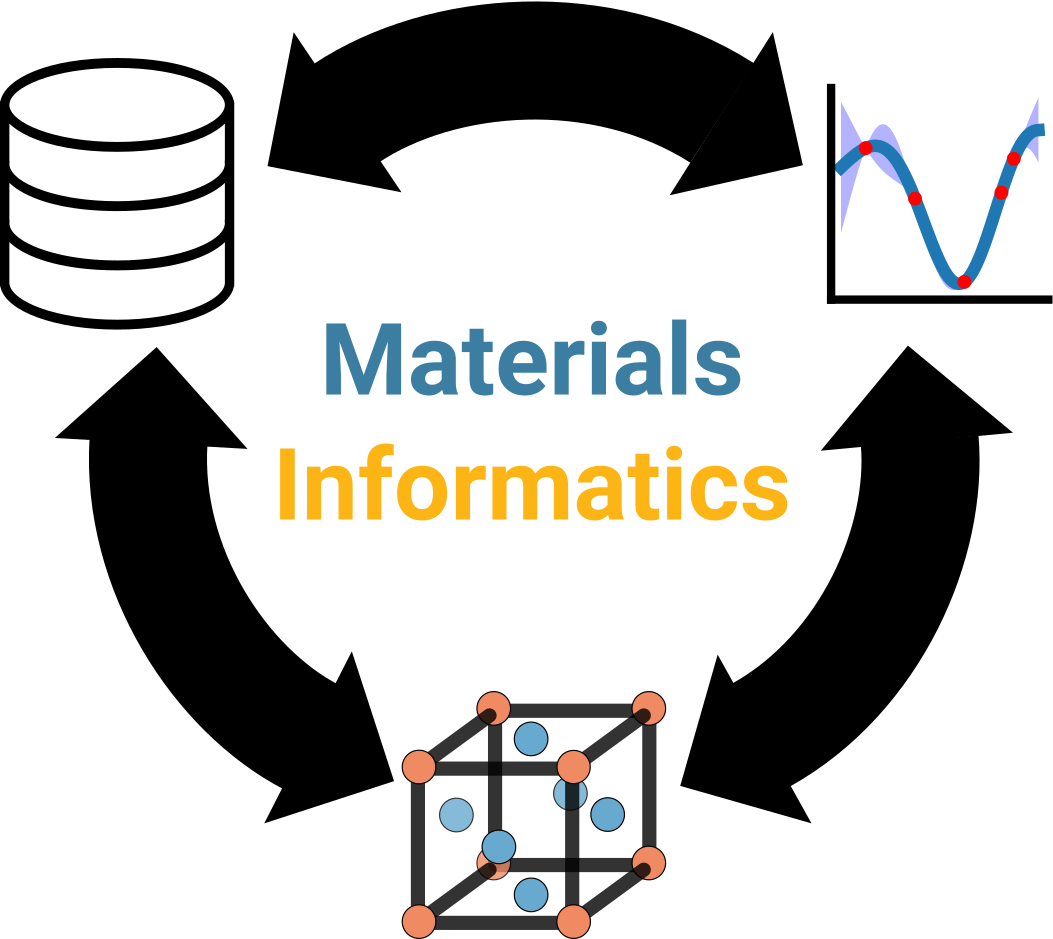Homework¶
The main “new thing” for today’s homework is the paper on the dielectric constants, which you saw in the final exercise in Tabular data. We recommend making that paper the priority, and then reviewing any of the code we went over yesterday/today as you need.
Reading¶
To recap some of the topics presented today in preparation for self-directed research, we suggest a few papers below on dielectric datasets and what one might do with that data that might be of interest to you for your self-directed research projects. We also include a paper discussing how to avoid making misleading visualizations in preparation for tomorrow’s lessons. These papers can all be found in this Google Drive folder.
The paper about the dielectric constants dataset on Materials Project (MP) by Ioannis Petousis et al. [1].
We strongly recommend reading the paper in its entirety because it gives a comprehensive (and not-too-specialized) discussion about the data format, the underlying science, and some interesting trends that can motivate your self-directed research. It’s not too long and mostly has tables and figures.
The perspective by Danielle Szafir on data visualization [1].
There are many pretty pictures and should be a fun read! Just reading the figure captions is fine if you don’t have time for the whole article.
(optional) The Ramprasad group (now at Georgia Tech) has published a dataset on hybrid organic-inorganic perovskites by Chiho Kim et al. [3].
(optional) Those interested in polymer dielectrics (MP is mostly concerned with inorganic materials) may be interested in the work by Tran Huan et al. also from the Ramprasad group [4].
(optional) Examples of the information that can be mined from such databases include the works by Ethan Shapera and André Schleife [5] and Arun Mannodi-Kanakkithodi et al. [6].
These might require a little more physics background to fully comprehend and appreciate. The Kasap textbook might be helpful in this regard.
Again, to make your reading experience a little more interactive and to allow for more targeted questions, we’ll experiment with leaving comments directly on the PDF in Google Drive. You’re welcome to ask/answer questions, share observations/reactions, link related content, etc. Participation is optional, but encouraged if you do have questions or thoughts to share. 😊 Enze will periodically check the Google Drive to respond to your comments.
Programming¶
There will be no programming “homework” today as we’ve already looked at quite a bit of code. We recommend reviewing the lessons that were most unclear, and/or trying some new things with the framework we laid out. Examples include further exploring the dielectric constants dataset, pandas functions, Pymatgen functions, or anything else of interest to you. Along the way, if you have any questions or get stuck anywhere, please don’t hesitate to reach out and we’d be happy to help.
References¶
- 1
Ioannis Petousis, David Mrdjenovich, Eric Ballouz, Miao Liu, Donald Winston, Wei Chen, Tanja Graf, Thomas D. Schladt, Kristin A. Persson, and Fritz B. Prinz. High-throughput screening of inorganic compounds for the discovery of novel dielectric and optical materials. Scientific Data, 4(1):160134, 2017. doi:10.1038/sdata.2016.134.
- 2
Danielle Albers Szafir. The good, the bad, and the biased: five ways visualizations can mislead (and how to fix them). Interactions, 25(4):26–33, 2018. doi:10.1145/3231772.
- 3
Chiho Kim, Tran Doan Huan, Sridevi Krishnan, and Rampi Ramprasad. A hybrid organic-inorganic perovskite dataset. Scientific Data, 4(1):170057, 2017. doi:10.1038/sdata.2017.57.
- 4
Tran Doan Huan, Arun Mannodi-Kanakkithodi, Chiho Kim, Vinit Sharma, Ghanshyam Pilania, and Rampi Ramprasad. A polymer dataset for accelerated property prediction and design. Scientific Data, 3(1):160012, 2016. doi:10.1038/sdata.2016.12.
- 5
Ethan P. Shapera and André Schleife. Database-driven materials selection for semiconductor heterojunction design. Advanced Theory and Simulations, 1(10):1800075, 2018. doi:10.1002/adts.201800075.
- 6
Arun Mannodi-Kanakkithodi, Tran Doan Huan, and Rampi Ramprasad. Mining materials design rules from data: The example of polymer dielectrics. Chemistry of Materials, 29(21):9001–9010, 2017. doi:10.1021/acs.chemmater.7b02027.
